Imagine this: with every strength training rep, you’re not just building muscle, you’re cranking up your body’s fat-burning furnace.
Strength training combined with proper nutrition is the ultimate one–two punch for beginners for weight loss and building a stronger, healthier YOU.
This guide will be your roadmap to success.
We’ll break down the key ingredients – strength training, weight loss, and proper nutrition – and show you how they work together to help you reach your goals.
But first, are you ready to unleash your inner fitness machine? Let’s get started!
The Power Trio: Strength Training, Weight Loss, and Proper Nutrition for beginners
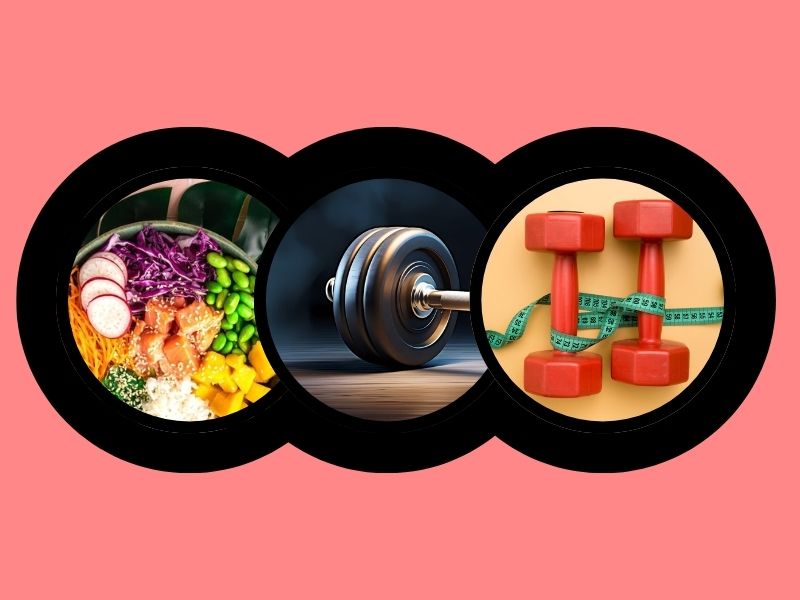
Ever feel like you’re constantly tired, your clothes aren’t fitting quite right, and that upcoming vacation keeps reminding you of your fitness goals?
Been there! But ditch the idea of endless cardio and dull diets.
There’s a much more exciting way to reach your goals: Strength training, Weight loss, and Proper nutrition.
Think of your body as a powerful machine.
Strength training builds muscle, which acts like a calorie-burning furnace, even when you’re resting.
Proper nutrition is the fuel that keeps this furnace roaring. Imagine each workout and healthy meal as a step towards a stronger, healthier you.
Let’s break down this dynamic team and see how they can transform your journey:
Strength Training: Building Your Calorie-Burning Machine

Think of your body like a car. The more muscle you have, the bigger the engine, and the more calories you burn – even at rest.
A study published in the Journal of Applied Physiology found that strength training can increase your resting metabolic rate (RMR) by up to 10%, meaning you can torch extra calories throughout the day without even hitting the gym [*].
This afterburn effect is a game-changer when it comes to weight loss.
Strength training doesn’t just burn calories during your workout; it helps build and maintain muscle, which becomes your body’s calorie-burning furnace.
Proper Nutrition: Fueling Your Fitness Engine

So you’ve got this amazing engine built for burning calories, but it needs the right fuel to run efficiently.
That’s where proper nutrition comes in. Think of it like high-octane gasoline for your body.
Eating a balanced diet rich in protein, healthy fats, and complex carbohydrates provides the energy you need to power through your workouts and supports muscle recovery.
Studies have shown that adequate protein intake, particularly around 0.8 grams per kilogram of body weight, is crucial for muscle growth and repair after strength training [*].
Skimp on protein, and your body may start breaking down muscle tissue for fuel, hindering your progress.
Weight Loss: Creating a Calorie Deficit

Now, let’s talk about that beach bod. To lose weight, you need to create a calorie deficit, meaning you burn more calories than you consume.
Combining a healthy diet with strength training sets you up perfectly for this.
Here’s the magic: Strength training helps you preserve muscle mass while creating a calorie deficit.
This means you lose fat, not precious muscle, leading to a sculpted and toned physique.
Research from the American Council on Exercise (ACE) shows that strength training combined with a calorie deficit can lead to significantly more fat loss compared to weight loss programs focused solely on cardio [*].
The Payoff: More Than Just Weight Loss
The benefits of this dynamic trio extend far beyond just weight loss. Here’s what you can expect:
- Increased Metabolism: As you build muscle, your body’s metabolic rate increases, helping you burn more calories overall, even at rest. This translates to easier weight management and a more sculpted physique.
- Improved Body Composition: Strength training helps you lose fat and gain muscle, leading to a more toned and balanced body composition. Imagine swapping those jiggly bits for a firmer, more defined shape – that’s the power of this trio in action!
- Overall Health Boost: Strength training, weight loss, and proper nutrition work together to improve your cardiovascular health, bone density, and overall well-being. Studies have shown that this combination can reduce the risk of chronic diseases like heart disease, type 2 diabetes, and even certain cancers [*].
Building Muscle Through Diet

Let’s face it, building muscle can feel like cracking a secret code.
You hit the gym religiously, pump iron like a champion, but those sculpted arms you dream of seem to remain stubbornly out of reach.
Frustrating, right?
The truth is, building muscle isn’t just about lifting weights (although that’s definitely a crucial part!). It’s a delicate dance between exercise and proper nutrition.
Protein: The Mighty Muscle Maker
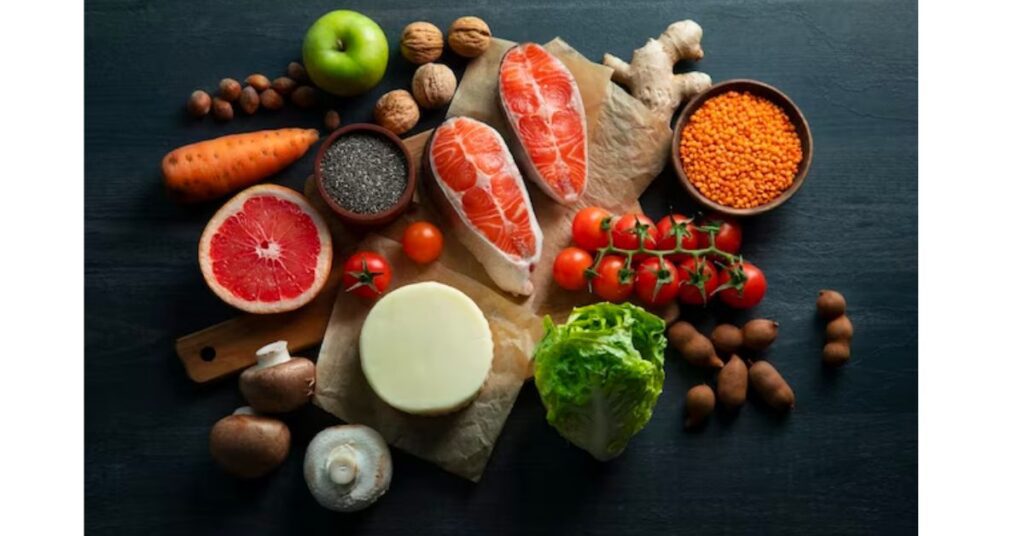
Think of protein as the tiny bricks your body uses to build and repair muscle tissue.
Every single rep you do in the gym creates microscopic tears in your muscle fibers.
It’s during recovery that these tears are repaired, and protein provides the essential building blocks for this process.
So, how much protein are we talking about?
This is where things can get confusing. You might hear conflicting advice online or from gym buddies.
But fret not! The sweet spot for daily protein intake for muscle building generally falls between 0.8 grams per kilogram of body weight.
Let’s say you weigh 80 kg (around 180 lbs). That translates to a daily protein target of roughly 82 – 147 grams. Now, this isn’t a magic number, but a good starting point. You can adjust it based on your activity level and individual needs.
You can also use online calculators for the same.

Choosing Your Protein Arsenal: Animal vs. Plant-Based Powerhouses
The good news? You have a wide range of protein sources to choose from! Here are some options to consider:
- Animal protein powerhouses include chicken breast, lean beef, fish, eggs, and Greek yogurt.
- Plant-based protein options like lentils, beans, tofu, tempeh, and quinoa are excellent choices for vegetarians and vegans.
Here, are a list of animal proteins and plant-based proteins sources which are high in protein.
The Takeaway: Building Muscle Through Smart Eating: Building muscle isn't about deprivation or bland meals. By focusing on a balanced diet rich in protein, spread throughout the day, and timed strategically around your workouts, you can provide your body with the tools it needs to transform.
Macronutrients and Micronutrients
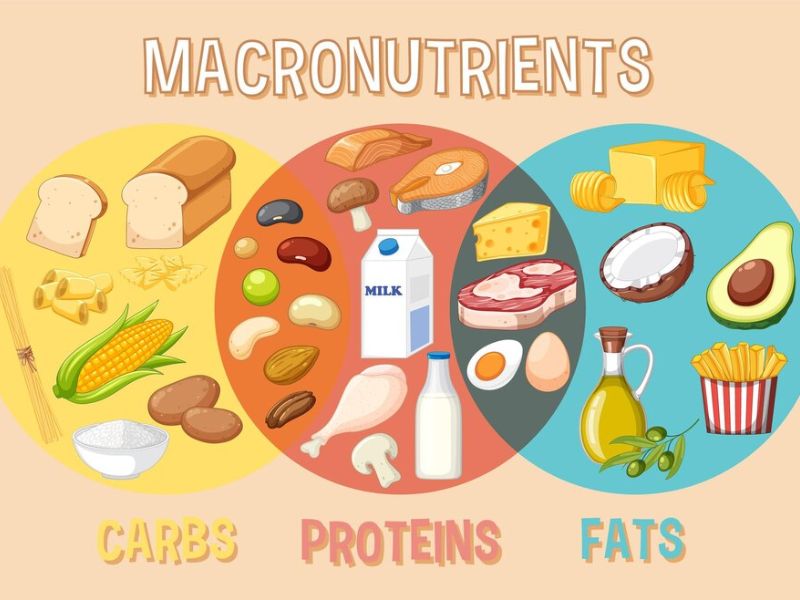
Imagine scrolling through social media, bombarded with fitness influencers boasting about their “MAGIC” diets.
Keto? Paleo? Intermittent fasting? It’s enough to make your head spin.
But here’s the secret: there’s no single “miracle” solution for weight loss. The key lies in understanding the power of macronutrients and micronutrients.
Think of them as the ingredients in a recipe for your dream physique.
Macronutrients, like protein, carbohydrates, and fat, provide the bulk of your energy.
But just like a delicious meal needs more than just flour and sugar, your body craves a balance of these macronutrients to function optimally.
The Macro Trio: Protein, Carbs, and Fats
- Protein: We already discussed protein’s importance in the last section, but here’s a deeper dive. Protein is like the construction material for your muscles. It’s essential for muscle growth, repair, and recovery, especially after resistance training workouts. Research published in the Medicine & Science in Sports & Exercise journal (2018) suggests that a higher protein intake combined with resistance training can significantly increase muscle mass compared to just exercise alone [*].
- Carbohydrates: Don’t relegate carbs to the villain category. Focus Complex carbohydrates like whole grains, fruits, and vegetables provide sustained energy to power you through your workouts. A study published in Medicine & Science in Sports & Exercise (2017) showed that consuming adequate carbohydrates before and after exercise can improve performance and recovery. Think of carbs as the fuel that keeps your engine running during those intense training sessions [*].
- Healthy Fats: Fats are often demonized, but healthy fats like avocados, nuts, and olive oil play a crucial role in hormone regulation, keeping you feeling full, and supporting overall health. They also help your body absorb certain vitamins.
Finding Your Macro Match: A Personalized Approach
There’s no one-size-fits-all macro ratio for weight loss. The ideal balance depends on your individual goals, activity level, and body type. However, a good starting point might be:
- Protein: 20-30% of your total daily calories
- Carbohydrates: 40-50% of your total daily calories (focus on complex carbs)
- Healthy Fats: 20-30% of your total daily calories
Take Action: Use a free online macro calculator to estimate your personalized needs based on your weight, height, activity level, and goals.
Micronutrients: The Tiny Titans of Health
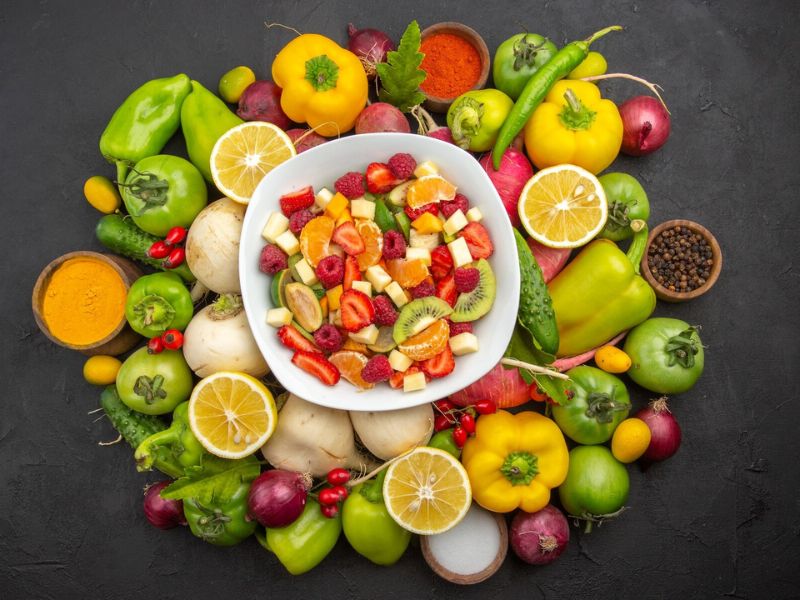
Micronutrients, including vitamins and minerals, might be small, but they pack a powerful punch. They work alongside macronutrients to support various bodily functions, including:
- Energy production
- Muscle recovery
- Immune function
- Hormone regulation
Deficiencies in certain micronutrients can hinder your progress and even lead to fatigue or injuries.
Building a Balanced Meal Plan
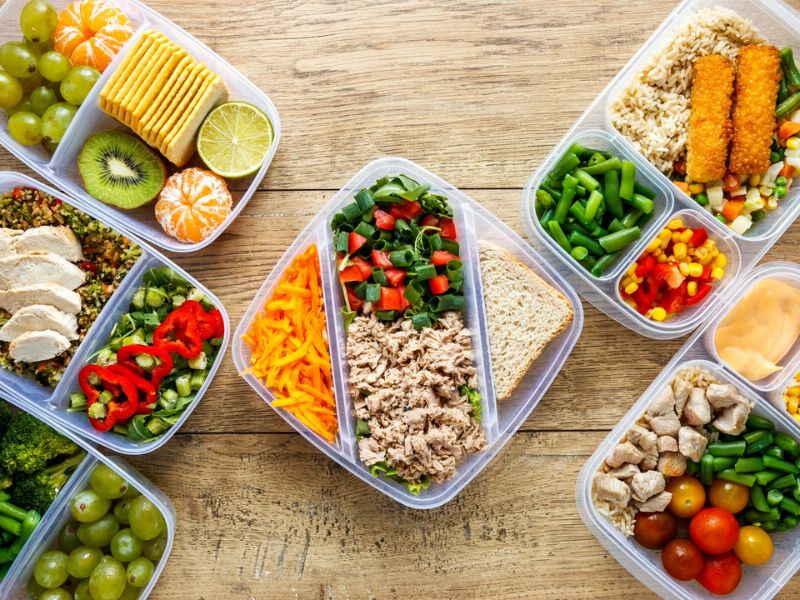
Picture this: you’ve crushed your workout, feeling empowered and ready to conquer your goals.
But then hunger pangs hit, and suddenly that perfectly planned salad loses its appeal.
We’ve all been there. But what if building a balanced meal plan for weight loss didn’t have to feel like a chore?
The truth is, it doesn’t!
By focusing on whole, unprocessed foods and understanding your individual needs, you can create a delicious and nutritious roadmap for success.
Let’s ditch the restrictive diet mentality and embrace a sustainable approach to fuel your body and achieve your weight loss goals.
The Power of Whole, Unprocessed Foods: Ditch the Fad Diets

Let’s face it, restrictive fad diets are often unsustainable and leave you feeling deprived. The key to success lies in whole, unprocessed foods.
These nutritional powerhouses come packed with the macronutrients and micronutrients your body needs to thrive [*].
Think of it this way: whole foods are like nature’s pre-packaged meals.
A juicy chicken breast provides protein for muscle building, while the surrounding vegetables offer a spectrum of vitamins and minerals.
A bowl of brown rice delivers sustained energy through complex carbohydrates, and a handful of almonds supplies healthy fats for satiety.
Here’s the best part: whole foods are incredibly versatile. You can transform them into delicious and satisfying meals that keep you on track with your goals.
Sample Meal Plans for Inspiration:

Now, let’s get cooking. Here’s a sample meal plan for different calorie levels, all featuring delicious and wholesome dishes:
Calorie Level: 1800-2000 (Moderate Activity)
- Breakfast: Masala Omelet (eggs, onions, tomatoes, spices) with a side of whole wheat toast and avocado.
- Lunch: Chicken Tikka Masala (grilled chicken in a tomato-based gravy) with brown rice and a side salad.
- Snack: Roasted Makhana (fox nuts) with a handful of mixed nuts.
- Dinner: Dal Makhani (black lentil stew) with a side of steamed vegetables and a small roti (flatbread).
Calorie Level: 2500+ (High Activity)
- Breakfast: Paneer Bhurji (scrambled cottage cheese with onions, tomatoes, and spices) with a side of whole wheat paratha (flatbread).
- Lunch: Fish Curry (baked or steamed fish in a flavorful coconut-based gravy) with brown rice and roasted vegetables.
- Snack: Greek yogurt with chopped berries and a sprinkle of chia seeds.
- Dinner: Rajma Masala (kidney bean stew) with brown rice and a side salad.
Vegetarian & Vegan Twists:
This is where the beauty of Indian cuisine truly shines!
- Vegetarians: Swap chicken or fish for paneer (cottage cheese) or tofu in curries. Explore lentil-based dishes like Sambar or Dal Fry for protein and fiber.
- Vegans: Opt for plant-based protein sources like lentils, chickpeas, and beans. Include plenty of vegetables and dairy alternatives like coconut milk for creaminess.
Remember, these are just starting points. Feel free to customise them to your preferences and dietary needs. There's a world of delicious and healthy options waiting to be explored.
Calorie Needs and Portion Control

Let’s be honest, navigating the world of calories can feel like deciphering ancient hieroglyphics.
You see numbers thrown around everywhere (like just above) – “1800 calories for weight loss,” “2500 calories for muscle gain” – but how do you know what magic number unlocks your weight loss goals?
Calorie Math: Tailoring the Equation to You
Imagine your body as a complex machine. It burns calories throughout the day to function – think breathing, thinking, and even digesting food.
The number of calories you need (your total daily energy expenditure (TDEE)) depends on several factors:
- Your Age: Generally, younger individuals have a higher metabolic rate and burn more calories at rest.
- Your Weight: The more you weigh, the more calories your body needs to maintain its current state.
- Your Activity Level: Are you a weekend warrior or a gym rat? The more active you are, the higher your calorie needs will be to fuel your workouts and daily activities.
- Your Goals: Looking to lose fat, build muscle, or maintain your current weight? Your goals will influence your calorie intake. For weight loss, you’ll likely be in a slight calorie deficit (burning more calories than you consume).
Search online for a “Basal Metabolic Rate (BMR)” calculator. Enter your age, weight, height, and sex. This will give you an estimate of the number of calories your body burns at rest, just to keep things ticking over.

But wait, there’s more! Your BMR only accounts for a portion of your daily calorie needs. You also need to factor in your activity level. Most calculators will provide additional options to estimate calories burned based on your daily exercise routine.
Calorie Goals: Finding Your Sweet Spot
Now that you have a ballpark calorie range, let’s personalize it for your goals.
- Weight Loss: To lose weight, you’ll need to create a calorie deficit. This means burning more calories than you consume. Aim for a deficit of 200–500 calories per day for safe and sustainable weight loss.
- Muscle Gain: Building muscle requires a slight calorie surplus. Aim for an additional 200–500 calories per day on top of your maintenance calories (BMR + Activity Level).
- Weight loss & Muscle Building: Here’s where things get interesting. For weight loss & muscle building, you want to find that sweet spot where you’re creating a small calorie deficit while still providing enough fuel for muscle growth. Often, this falls within a range slightly below your maintenance level.
Portion Control: Mastering the Art of “Just Enough”
Okay, you know whole foods are your allies, but how much should you actually eat? Here’s where portion control comes in:
- Measuring Cups and Spoons: These are your precision tools for accuracy. Invest in a good set and measure out your ingredients, especially for things like rice, pasta, and oils.
- The Gram Game: A kitchen scale can be a helpful tool, especially for protein sources like meat and fish. Knowing the weight of your food allows for precise portioning.
- The Palm-Sized Solution: This is a handy rule of thumb!
- Protein: Aim for a palm-sized serving of lean protein sources like chicken, fish, or tofu.
- Carbohydrates: A closed fist is roughly equivalent to a serving of complex carbohydrates like brown rice or whole-wheat bread.
- Healthy Fats: Your thumb is a good reference for healthy fats like avocado or nut butter.
Pre and Post-Workout Nutrition
Imagine this: You’re about to conquer a challenging weight training session. You lace up your shoes, feeling pumped and ready to push your limits.
But then, your stomach growls in protest. Did you skip breakfast, or maybe that pre-workout snack wasn’t enough?
Here’s the truth: what you eat before and after your workout significantly impacts your performance and recovery.
Think of your body as a high-performance machine.
Pre and post-workout nutrition are the fuel and the repair tools you need to function at your best and build that sculpted physique you desire.
The Pre-Workout Pick-Me-Up
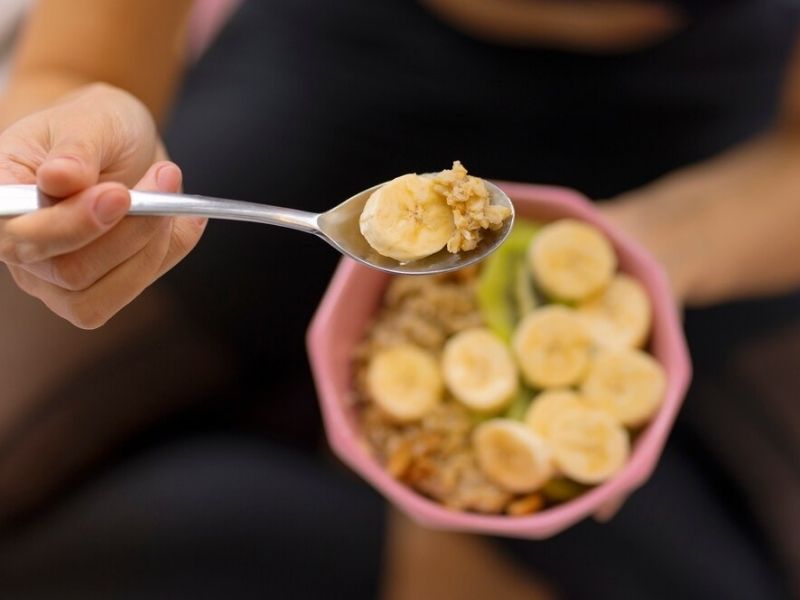
Hitting the gym on an empty stomach is like trying to drive a car without gas.
You might manage to sputter along for a bit, but peak performance is out of the question.
A well-timed pre-workout meal or snack can:
- Boost Your Energy Levels: Carbs provide readily available energy to power you through your workout. Think of them as the gasoline that keeps your engine running smoothly.
- Improve Focus and Performance: Studies like one published in the Journal of the International Society of Sports Nutrition (2018) suggest that consuming carbohydrates before exercise can enhance focus and cognitive function during workouts [*].
Aim to eat a pre-workout meal/snack 30–60 minutes before you hit the gym.
Here are some options to keep you energized:
- Spiced Chickpea Salad: Combine cooked chickpeas with chopped vegetables (onions, tomatoes, cucumbers) and a sprinkle of lemon juice and chaat masala for a protein and fiber-rich snack.
- Masala Oats: A quick and energizing breakfast made with rolled oats, milk, nuts, and a touch of honey or jaggery.
- Masala Egg Bhurji: This classic scramble with onions, tomatoes, and spices provides a quick and easy protein boost.
- Fruit with Nuts and Seeds: A banana with a handful of almonds or a pear with sunflower seeds offers a natural source of carbohydrates and healthy fats for sustained energy.
- Sprouted Moong Dal Cheela: A protein and fiber-rich savory pancake made with sprouted moong dal (green gram) batter, perfect for a light pre-workout snack.
- Banana with Peanut Butter: This classic combo provides a winning mix of carbohydrates and healthy fats for sustained energy.
The Post-Workout Refuel: Repair and Rebuild with Indian Flair

Just like a car needs a tune-up after a long drive, your body needs to repair and rebuild muscle fibers after a tough workout.
This is where your post-workout meal becomes crucial:
- Muscle Repair with Protein: Protein provides the building blocks your muscles need to repair and grow stronger. Research suggests that athletes and individuals looking to build muscle should aim for 1.6-2.2 grams of protein per kilogram (kg) of body weight per day [*].
- Replenish Energy Stores with Carbs: Carbs help replenish your glycogen stores, the primary source of energy for your muscles.
Within 1-2 hours after your workout, aim for a post-workout meal/snack rich in protein and carbohydrates.
This golden ratio helps repair muscle tissue and replenish glycogen stores, the energy source your muscles use during exercise.
Here are some recovery options:
- Chicken Tikka Masala with Brown Rice: The lean protein in chicken and the complex carbohydrates in brown rice are a match made in recovery heaven.
- Dal Fry with Roti: This protein and fiber powerhouse is a vegetarian’s dream for post-workout fuel.
- Mango Lassi with Protein Powder: This creamy and refreshing drink combines the natural sweetness of mangoes with the muscle-building benefits of protein powder – a delicious and nutritious way to refuel.
- Chicken Biryani (Brown Rice Version): This flavorful dish provides a protein and carbohydrate punch for muscle recovery. Opt for a brown rice version for added fiber.
- Dal Khichdi: A comforting and protein-rich dish made with lentils, rice, and spices, perfect for post-workout replenishment.
- Egg Scramble with Vegetables: Scrambled eggs offer a quick and convenient source of protein, while vegetables provide essential vitamins and minerals.
Building a Sustainable Diet

Imagine this: you’ve crafted a perfect meal plan, meticulously tracked your macros, and hit the gym with unwavering dedication.
But weeks turn into months, and the initial excitement starts to dwindle. Sound familiar?
Building a sustainable diet for weight loss goes beyond just following a meal plan; it’s about creating healthy habits that fit seamlessly into your lifestyle.
Here’s your roadmap to navigate the delicious world of food and fuel your body for long-term success.
The Whole Food Advantage: Ditch the Processed Pitfalls
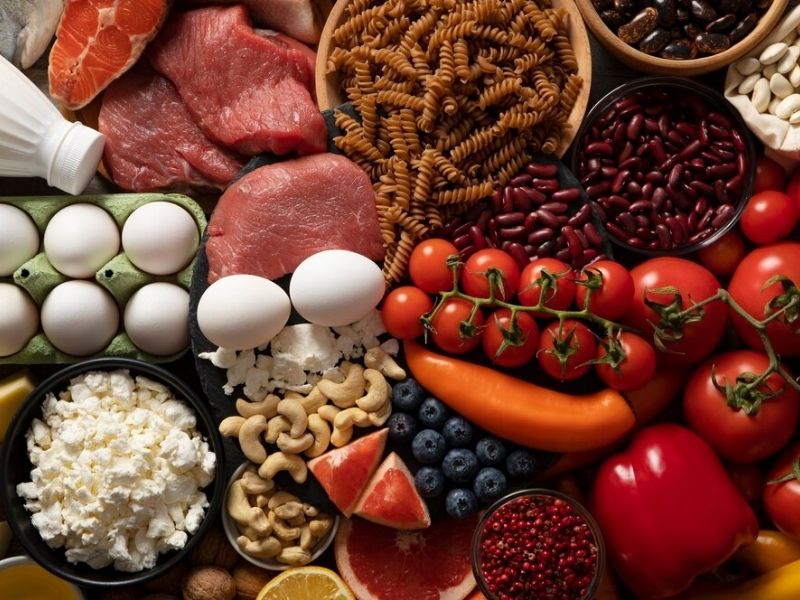
Imagine fueling your body with vibrant fruits and vegetables, lean protein sources, and complex carbohydrates – that’s the magic of whole, unprocessed foods.
These nutritional powerhouses offer a complete package of benefits:
- Nutrient Powerhouse: Whole foods are packed with essential vitamins, minerals, fiber, and healthy fats – everything your body needs to function optimally and support your goals.
- Sustained Energy: Processed foods often provide a quick sugar rush followed by a crash, leaving you feeling sluggish and reaching for more. Whole foods, on the other hand, offer sustained energy to power you through your day. A study published in the American Journal of Clinical Nutrition (2017) suggests that diets rich in whole grains can improve energy levels and cognitive function [*].
- Satiety Satisfaction: The fiber and protein content in whole foods keep you feeling fuller for longer, reducing cravings and helping you manage portion control.
Meal Timing Magic: Fueling Your Body Throughout the Day

Here’s a basic meal timing strategy to optimize your energy levels, performance, and recovery:
- Start Your Day Strong: Aim for a balanced breakfast within an hour of waking up. This kickstarts your metabolism and sets you up for a successful day.
- Snack Smart: Plan healthy snacks throughout the day to avoid reaching for sugary treats or processed options when hunger pangs strike.
- Pre and Post-Workout Power: Fuel your workouts with a strategic pre-workout meal/snack and prioritize protein and carbohydrates for post-workout recovery.
- Balanced Dinner: End your day with a nourishing dinner that includes all food groups.
Building a Sustainable Future: Beyond the Meal Plan
Building a balanced meal plan is a crucial step, but it’s just the beginning.
The key to success lies in developing sustainable habits you can maintain for the long haul. Here are some additional tips:
- Meal Prep Magic: Dedicate some time each week to prepping your meals. This saves time and ensures you have healthy options readily available.
- Cook More at Home: Cooking allows you to control the ingredients and portion sizes. Explore new healthy recipes and turn cooking into a fun activity!
- Don’t Fear Healthy Snacks: Keep healthy snacks on hand to prevent unhealthy choices when hunger strikes. Stock up on fresh fruits and vegetables, nuts and seeds, or pre-portion single-serving yogurts.
Building Sustainable Habits for Long-Term Success
Sustainability is key! Here are some tips for building habits that last:
- Start Small: Don’t overwhelm yourself with drastic changes. Introduce small, sustainable practices one at a time. Maybe swap sugary drinks for water or start adding a serving of vegetables to your lunch.
- Find Your Why: Connect with your deeper motivations for pursuing weight loss. Is it about feeling more confident? Having more energy to keep up with your kids? A clear “why” will fuel your motivation during challenging times.
- Celebrate Milestones: Acknowledge your progress, big or small, to stay motivated. Did you hit a new personal record at the gym? Celebrate! Celebrating your achievements keeps you focused on the long-term goal.
Lifestyle Factors for Weight loss
Imagine this: You’ve crushed a killer workout, mastered your meal plan, and you’re feeling like a weight loss rockstar.
But then, life throws you a curveball – a sleepless night, a stressful deadline, and suddenly your progress feels like it’s stalling.
We’ve all been there! But what if I told you that a good night’s sleep and effective stress management are just as important as your gym routine and meal plan?
Sleep: The Unsung Hero of Muscle Recovery

Think of sleep as the silent partner in your weight loss journey. While you’re catching those Zzz’s, amazing things are happening behind the scenes:
- Muscle Repair and Growth: During sleep, your body releases growth hormones, a key player in muscle repair and growth. Studies like one published in the Journal of Strength and Conditioning Research (2017) suggest that insufficient sleep can hinder muscle protein synthesis, which is essential for building muscle [*].
- Metabolic Regulation: Sleep deprivation can disrupt hormones that regulate hunger and satiety, making you crave sugary or fatty foods and potentially leading to overeating.
Interactive Element: How's your sleep quality? Take a moment to reflect on your sleep habits. Aim for 7-8 hours of quality sleep each night.
Tips for a Good Night’s Sleep:
- Develop a Consistent Sleep Schedule: Go to bed and wake up around the same time each day, even on weekends.
- Create a Relaxing Bedtime Routine: Take a warm bath, read a book, or practice calming activities like meditation before bed.
- Optimize Your Sleep Environment: Ensure your bedroom is dark, quiet, and cool for optimal sleep quality.
Taming the Stress Monster: Keeping Cortisol in Check

Stress is a fact of life, but chronic stress can wreak havoc on your weight loss goals. Here’s why:
- Cortisol Chaos: The stress hormone cortisol can lead to increased belly fat storage and muscle breakdown.
- Cravings and Comfort Eating: Stress can trigger cravings for sugary or fatty foods, making it harder to stick to your healthy eating plan.
Strategies for Stress Management:
- Find Your Stress Busters: Identify activities that help you unwind, whether it’s exercise, yoga, spending time in nature, or listening to calming music.
- Practice Mindfulness: Mindfulness techniques like meditation and deep breathing can help manage stress and improve overall well-being.
- Social Support System: Lean on your friends, family, or a therapist for support during stressful times.
Mindset and Motivation

Let’s be honest, the road to weight loss isn’t always smooth sailing.
Cravings roar, social gatherings with tempting treats lurk around every corner, and motivation can sometimes take a vacation.
But fear not, fellow fitness warriors.
This section equips you with the tools to slay those metaphorical dragons and cultivate a mindset that sets you up for long-term success.
Taming the Craving Beasts:

We’ve all been there – the uncontrollable urge for sugary treats or unhealthy snacks. Here’s how to fight back:
- Identify Your Triggers: Are you a stress eater? Do certain situations make you crave unhealthy foods? Once you know your triggers, you can develop strategies to avoid them or choose healthier alternatives.
- Healthy Snack Arsenal: Keep a stash of healthy snacks like fruits, vegetables, nuts, or yogurt readily available to combat cravings before they take over.
- Hydration Hero: Sometimes, thirst can be mistaken for hunger. Drinking plenty of water throughout the day can help curb cravings and keep you feeling full.
Eating Out Like a Weight loss Boss:

Eating out doesn’t have to derail your progress! Here are some tips:
- Scan the Menu: Look for options that are high in protein and fiber and lower in processed ingredients and unhealthy fats.
- Portion Control Power: Remember, you don’t have to finish everything on your plate. Ask for a to-go box and enjoy the rest for another meal.
- Smart Swaps: Can you swap fries for a side salad? Ask for dressings on the side for better portion control.
Building a Positive Food Relationship:
Ditch the food guilt and negativity! Here’s how to cultivate a healthy relationship with food:
- Focus on Nourishment: See food as fuel for your body and your goals, not the enemy.
- Mindful Eating: Savor every bite and eat slowly, paying attention to your body’s hunger cues.
- Celebrate Non-Scale Victories: Focus on how you feel and the strength you’re building, not just the numbers on the scale.
Addressing Common Challenges & Myths
Busting Myths for Strength Training and weight loss for beginners
Myth #1: Starving Yourself is the Shortcut to Muscle Building

Forget crash diets and extreme calorie restriction.
Research published in the National Institutes of Health (NIH) emphasizes the importance of sufficient protein intake (around 0.8-1 gram per kilogram of body weight) to support muscle growth and repair [*].
Building muscle while eating enough sounds counterintuitive, right?
Here’s the truth: your body needs energy to build muscle.
Severe calorie restriction creates an environment where your body breaks down muscle tissue for fuel, hindering your progress.
Myth #2: All You Need is Protein
Muscle isn’t built solely on protein. Healthy fats are essential for hormone regulation and nutrient absorption, while complex carbohydrates provide the energy to power your workouts.
Think beyond just protein shakes.
Lean protein sources like chicken, fish, beans, legumes, nuts, and healthy fats like avocados, olive oil, and fatty fish are all crucial for muscle building and overall health.
Myth #3: Working Out Means No Need to Adjust Your Diet

Strength training is fantastic. It burns calories and helps build muscle, but ignoring your diet won’t maximize results.
Imagine your body as a car.
Working out is like stepping on the gas pedal, but if you don’t put in enough fuel (food), your car won’t go far. Strength training increases your body’s calorie expenditure.
To support muscle growth and recovery, you might need to slightly adjust your calorie intake upwards.
This doesn’t mean overeating; a registered dietitian or healthcare professional can help you determine the right amount of calories based on your individual goals and activity level.
Myth #4: Fun Foods are Off-Limits

Life’s meant to be enjoyed. Depriving yourself completely of your favorite treats can lead to cravings and hinder your long-term progress.
Practice portion control and make smart choices.
Enjoy a burger occasionally, but pair it with a side salad and unsweetened iced tea for a more balanced muscle building meal plan.
Challenge #1: Plateauing Progress
Hitting a plateau is a common frustration. Here’s how to break through:
- Progressive Overload: Gradually increase the weight, sets, or reps you lift over time to keep challenging your muscles.
- Training Split Switch-Up: Confuse your muscles with a different training split (push/pull, upper/lower body) to stimulate new growth.
- Fueling for Gains: Re-evaluate your diet. Are you consuming enough calories and the right types of nutrients to support muscle building?
Challenge #2: Travel and Disruption
Travel and busy schedules can disrupt your routine. Here’s how to stay on track:
- Plan Ahead: Research healthy restaurant options or pack portable snacks for your trip.
- Bodyweight Workouts: Utilize bodyweight exercises like squats, lunges, push-ups, and planks for a workout you can do anywhere, anytime.
- Mini Workouts: Short, high-intensity workouts can be just as effective as longer sessions when time is tight.
Conclusion
The journey to weight loss is a marathon, not a sprint. By combining strategic nutrition with a consistent exercise routine, you can transform your body and achieve lasting results.
This guide has equipped you with the knowledge to make informed choices about your diet, prioritize sleep and stress management, and cultivate a positive mindset for long-term success.
Remember, the most important ingredient is YOU. Embrace the process, celebrate your victories, and fuel your body with the nourishment it needs to reach its full potential.
Let food be your medicine, movement your magic, and a healthy mindset your guiding light. Now go forth and conquer your weight loss goals.

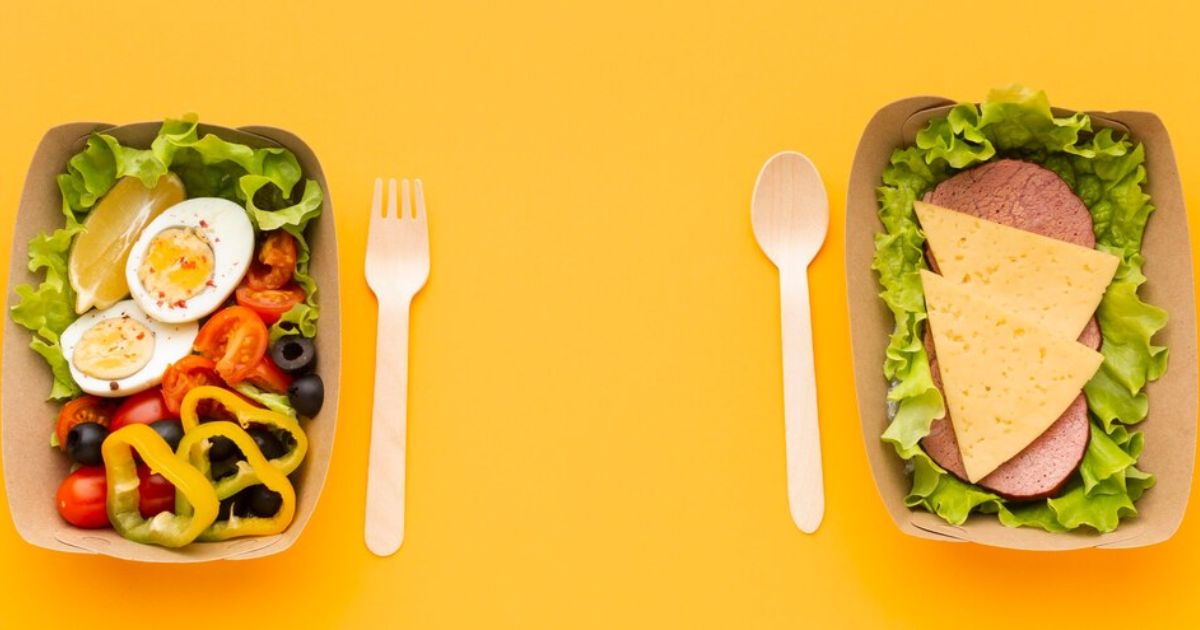
Wow superb blog layout How long have you been blogging for you make blogging look easy The overall look of your site is magnificent as well as the content.
Usually I do not read article on blogs however I would like to say that this writeup very compelled me to take a look at and do so Your writing taste has been amazed me Thanks quite nice post.
What i do not realize is in fact how you are no longer actually much more wellfavored than you might be right now Youre very intelligent You recognize thus considerably in relation to this topic made me in my view believe it from numerous numerous angles Its like men and women are not fascinated until it is one thing to do with Lady gaga Your own stuffs excellent All the time handle it up.